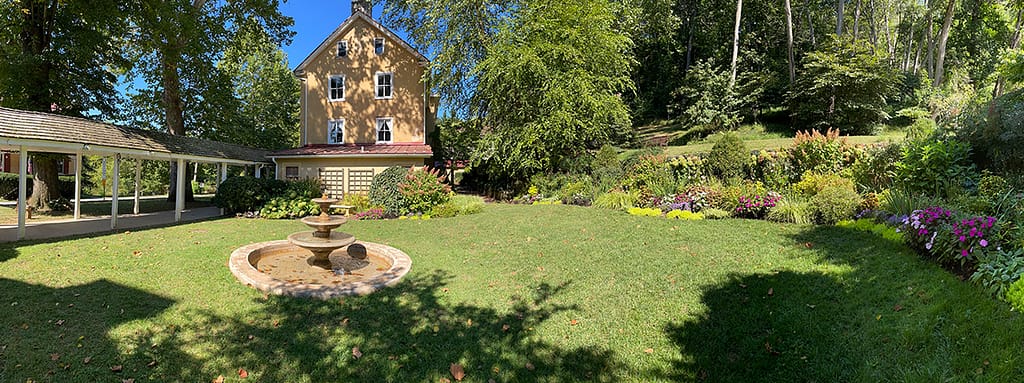The Pennsylvania Academy of the Fine Arts Country School walking tour
Thank you for joining us on the Pennsylvania Academy of the Fine Arts Country School tour. We’ll visit and learn about 16 of the painting sites important to the learning that happened here from 1916-1951. We’ll also touch on some of the students and artists who worked here, and see some of the works inspired by this beautiful campus.
The Pennsylvania Academy of the Fine Arts Country School (1916-1952)
In the summer of 1917, the Pennsylvania Academy of the Fine Arts (PAFA), the oldest art school in the United States, came to Chester Springs.
Recognizing the importance of the en plein air (out-of-doors) landscape painting popularized by the Impressionists, the Academy purchased the old spa property of Yellow Springs to establish a landscape school. With its well-equipped, historic buildings, highly paintable landscape, and picturesque surroundings, the 40-acre property perfectly realized the vision of John Frederick Lewis, president of the Academy to create an ideal balance between formal art training and a healthy, wholesome life for the students
“The chief object of the Academy in establishing a school in the country,” the School Circular of 1917 stated, “is to afford fine-art instruction in the open air, with all the beautiful surroundings of nature herself, in order to supplement instruction within the walls of classrooms, and to afford an opportunity, for the study of art in the summer, to school teachers and to others who cannot spare time to study in the winter.” Prospective students received assurance, however, that the buildings would be kept open through-out the year so that nature could be seen “in all her varying moods.”
Instruction at the “Country School” was to be by criticisms offered by the Academy’s most celebrated instructors, who would come out to Chester Springs once or twice a week in the summer-time. Instructors who gave criticisms at Chester Springs during the first summer session in 1917 were Henry McCarter, Arthur B. Carles, Robert Spencer, Fred Wagner, and W.L. Lathrop. Hugh
Henry Breckenridge came out in 1918 and Daniel Garber in 1919. Joseph T. Pearson, George Harding, Roy C. Nuse, Francis Speight, Mildred Miller, Florence Cannon, Henry C. Pitz, Roswell Weidner, Benton Spruance, John C. McCoy, and Charles Rudy were instructors at various times.
The three “modernists”–McCarter, Carles, and Breckenridge–were noted for their innovative approach to color and their inspired teaching. McCarter taught composition and color theory, but insisted that ability in draftsmanship was primary. “He taught us to paint properly,” recalls one of his students, Blanche Lomisch Alexander (Chester Springs “Summer School,” 1918 to 1921). Carles brought to his classes a close, personal knowledge of the current artistic trends in Europe. Garber, regarded as one of the leading Pennsylvania Impressionists, taught at Chester Springs most of the summers that the school was open.
Through interviews with former students and instructors and archival photographs, we have been able to identify around 150 works of art done at the Country School and many of the painting sites. With this self-guided walking tour, we invite you to visit sixteen of these sites and compare them with the works of art that they inspired.
Priscilla A. Waggoner, Ph.D.
Historian/ Past Archivist of Historic Yellow Springs
To reach the first painting site, walk west along the porch of the Lincoln Building and down the steps to the Courtyard between the Lincoln Building and the Inn.

